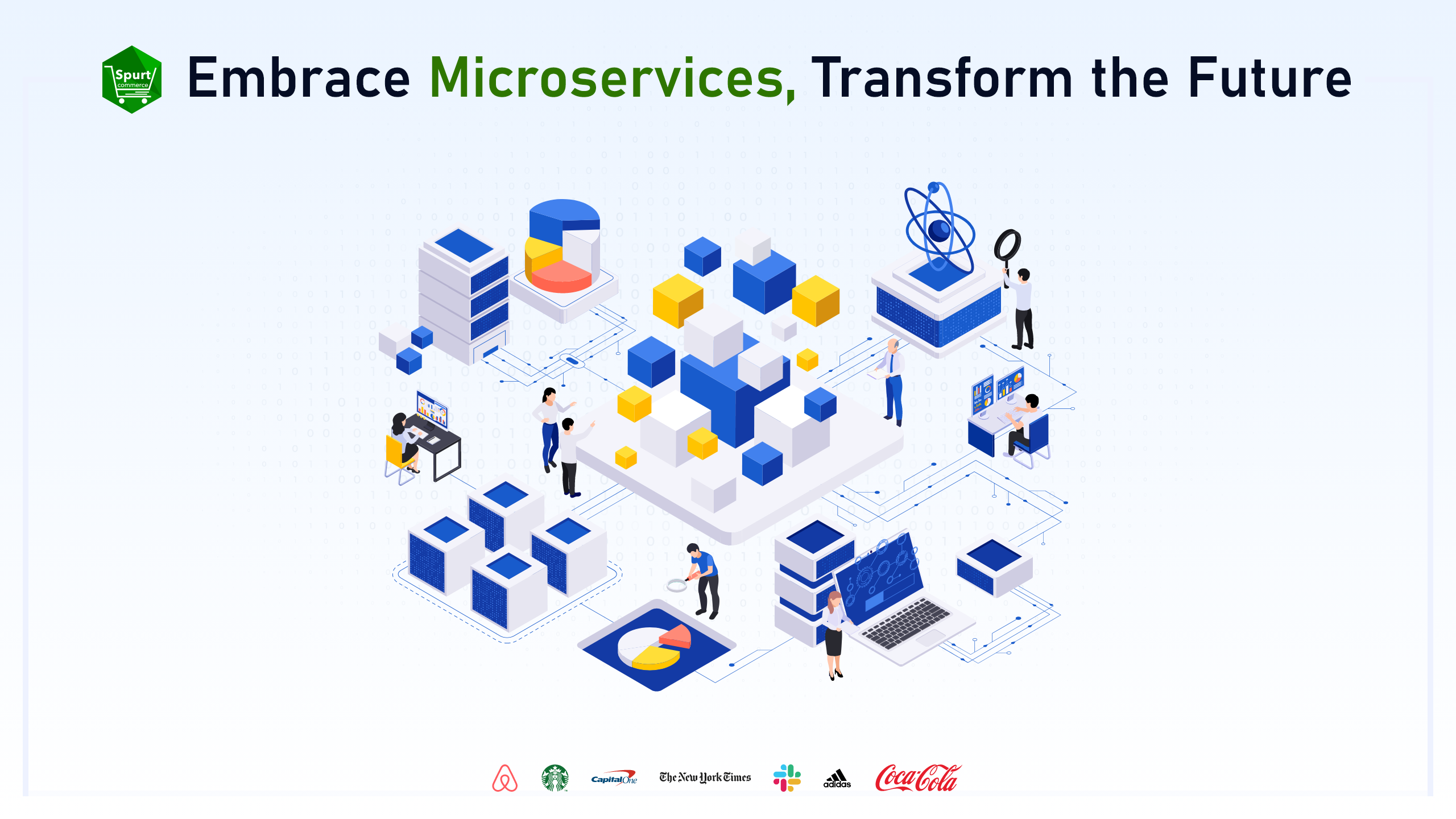Crafting the Future of eCommerce with Microservices Magic
 Spurtcommerce
Spurtcommerce
Introduction to Microservices
In today's rapidly evolving technological landscape, the concept of microservices has emerged as a revolutionary approach to software architecture. Microservices, often referred to as the building blocks of modern applications, involve breaking down complex software systems into smaller, independently deployable units or services. These services are designed to perform specific functions, communicate via lightweight protocols, and can be developed, tested, and deployed independently. The adoption of microservices has been on the rise, with numerous companies across various industries embracing this architectural paradigm to streamline their operations and enhance their competitive edge.
Companies Embracing Microservices
Here is a list of prominent companies that have harnessed the power of microservices to transform their operations and deliver superior user experiences:
Airbnb: Airbnb, the global vacation rental platform, utilizes microservices to manage its diverse offerings, including property listings, booking processes, and user profiles. This approach enables them to scale rapidly while maintaining a seamless user experience.
Starbucks: The coffee giant Starbucks has adopted microservices for its mobile ordering system, loyalty program, and payment processing. Microservices allow Starbucks to efficiently cater to a growing number of mobile app users.
Capital One: A major financial institution, Capital One, relies on microservices to enhance its banking and credit card services. This architecture helps them deliver personalized financial experiences and quick responses to customer requests.
The New York Times: The media giant The New York Times uses microservices to streamline content delivery, user subscriptions, and personalized content recommendations. This enables them to adapt to the ever-changing landscape of digital media.
Slack: Slack, a popular team collaboration platform, implements microservices for features like real-time messaging, file sharing, and integrations. Microservices allow Slack to maintain responsiveness and scalability as user demands grow.
Adidas: The sportswear company Adidas leverages microservices for its e-commerce platform, managing product listings, shopping carts, and user accounts. This architecture supports a global audience and a diverse product catalog.
Coca-Cola: Coca-Cola employs microservices to optimize its supply chain and distribution systems, ensuring that products reach consumers efficiently. Microservices contribute to the agility of their global operations.
Benefits of Microservices
The adoption of microservices brings forth a myriad of benefits, transforming the way businesses develop and deploy software:
Enhanced Agility: Microservices enable companies to quickly respond to changing market demands, implement new features, and adapt to emerging technologies.
Improved Scalability: Fine-grained scalability ensures efficient resource allocation to handle varying workloads.
Faster Time-to-Market: Smaller, independent teams can develop and deploy microservices more rapidly, reducing development cycles.
Isolation of Failures: Isolating services prevents one component's failure from affecting the entire system, enhancing system reliability.
Technology Diversity: Teams can choose the most suitable technology stack for each service, promoting innovation and experimentation.
Cost Efficiency: Microservices optimize resource usage, resulting in cost savings, particularly in cloud-based environments.
Enhanced Developer Productivity: Smaller codebases and focused teams lead to improved developer productivity and reduced coordination overhead.
Continuous Deployment: Microservices align with continuous integration and deployment (CI/CD) practices, facilitating automated updates and maintenance.
Flexibility: Microservices accommodate diverse technology stacks, allowing teams to select the best tools for specific services or tasks.
Improved Fault Tolerance: Failures in one service can be isolated, minimizing disruptions and enhancing system robustness.
Wrapping up:
Spurtcommerce has strategically embraced the microservices architecture, primarily to unlock greater scalability and flexibility tailored to the unique requirements of eCommerce businesses. By transitioning to microservices, Spurtcommerce has reimagined its architectural framework, paving the way for modular design principles that simplify the process of enhancing and extending its eCommerce platform. This evolution aligns seamlessly with the prevailing trend in the eCommerce industry, which increasingly demands flexible and highly responsive solutions.
For an exploration of Spurtcommerce's journey from a monolithic structure to a dynamic microservices architecture, we invite you to delve into the article available on Medium. This article provides invaluable insights into the transformative process and its profound impact on Spurtcommerce's ability to meet the ever-evolving needs of eCommerce businesses.
Subscribe to my newsletter
Read articles from Spurtcommerce directly inside your inbox. Subscribe to the newsletter, and don't miss out.
Written by
